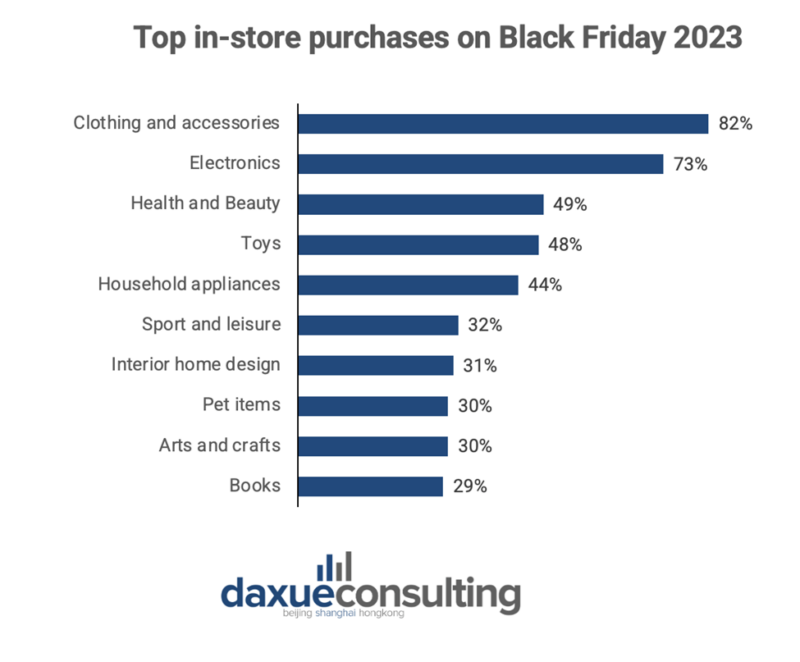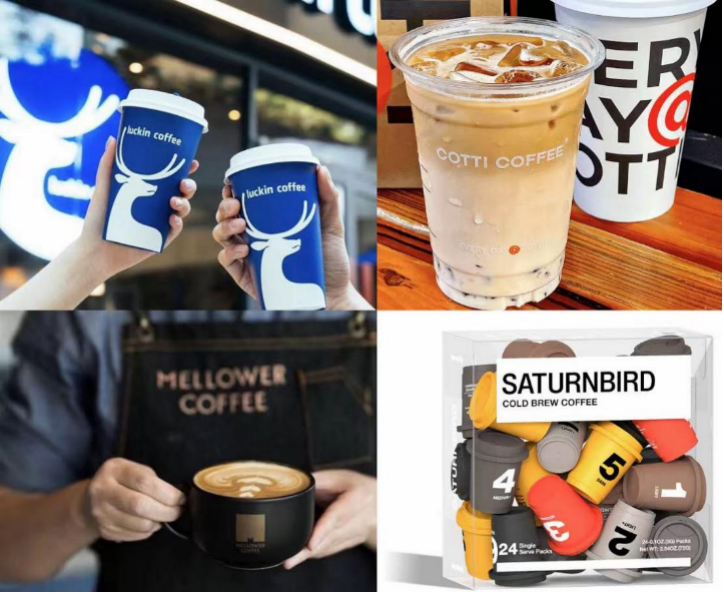Chinese brands looking to join global shopping festivals like Black Friday, Boxing Day, and Cyber Monday have strengths such as being cost-effective, having large production capabilities, and being efficient. They face challenges like being perceived as lower quality and, carrying the “Made in China” label, they struggle to stand out against the competition.
To do well in these global markets, Chinese brands can use their strengths by using platforms like TikTok, offering subscription-based sales, and forming strategic partnerships. However, they need to watch out for things like tariffs, trade tensions, and competition from local brands. Success depends on understanding the different ways people shop in places like the US and using deals and discounts to appeal to customers during these festivals. So, it’s important for Chinese brands to approach global shopping festivals with a practical strategy that takes into account both their advantages and the challenges they might face.
Download our US consumer segmentation report

1. Marketing channels: leveraging online and offline platforms
In 2023, 36% of shoppers prefer Small Business Saturday over in-person Black Friday shopping (27%).
- Online channels:
- Utilize YouTube for its strong brand recognition and high conversion rate in the US and the UK: YouTube achieves an average ad conversion rate of 12%, with 70% of viewers making purchases from discovered brands.
- Leverage Instagram to target a global audience aged 18 to 24. Use Instagram tags to stay updated on the current trends.
- Recognize the potential of TikTok for a younger demographic and large customer base: TikTok’s average ad conversion rate is 1.1%, with 25% of users actively researching or making purchases of featured products. It is also advised to utilize TikTok for its massive user base and engagement levels.
- Take advantage of the local social commerce: In the State of Fashion research, 37% of fashion executives quoted social commerce as one of the top three themes that will have an impact on their business in 2022. Promotions/sales (81%) and free shipping (80%) will be the biggest driving factors for consumers when choosing where to shop, as well as Availability of products (66%), Return/exchange policies (50%), Fast shipping times (46%), and Online reviews (46%).
- Offline Channels:
- Billboard Advertising: Invest in strategic advertising in high-traffic areas to enhance brand visibility. Follow the example of Great Wall Motor by introducing products in prominent locations like New York’s Times Square. This location draws more than 10,000 tourists daily, making the NASDAQ Tower’s digital screen one of the premier spots to capture global attention.
- Invest in experiential interactions, such as pop-up stores where customers can try out a product.


- BOPUS (buy online, pick up in-store):
- A current trend in stores is buying things online, purchasing online, and then picking them up in the store, also known as BOPUS. A survey found that 54% of American shoppers are more likely to spend their Black Friday money at places that offer BOPUS. This makes the purchasing experience more convenient and time-saving.
2. Consumer trends: addressing sustainability health-conscious and ethical choices
Align product offerings with local consumer preferences for sustainability and health.
- In the case of the US market, take bubble tea, for instance. Provide sugar-free, lower-carb, high-fiber, lower-fat, plant-based, vegan, and diet-specific options at affordable price points.

- Research suggests that 76% of US consumers are looking forward to incorporating new flavors and tastes into their beverage consumption. There is rising interest in botanical flavors including lavender. At the same time, US consumers are looking for more health-conscious choices that go with great tastes like plant-based, vegan, diet-specific foods at a permissible and cost-effective price point.
3. Building marketing campaigns with a user-centric approach as an aim for consumer temptation
- Utilize hashtags and short video marketing on platforms like Instagram and TikTok.
- Implement user-centric approaches and licensing agreements for a unique value proposition.
- Leverage TikTok marketing and adopt a subscriptive method to engage with a younger audience.
- Customer retention and subscription management: Unique value proposition and a differentiation strategy to stand out, and then manage to deliver a positive experience to retain customers. Like Starbucks, the Taiwanese cafe 85°C implemented a loyalty program to retain and interact with their customers, creating a unique and individualized experience for them. In addition, managing subscription plans effectively is crucial to preventing customer dissatisfaction due to unwanted or misunderstood charges. Foreign companies should ensure transparent subscription policies.
4. Managing brand image: emphasizing individualism and authenticity
Establishing a brand identity that truly connects with the intended audience can be hard at times, especially when tapping into a foreign market.
- In the case of the US market, the brand as well as the products need to feel and look entirely American. Examples: Volvo, Motorola, Smithfield Foods, and AMC, which are some famous Western brands that are bought from Chinese companies.
- More emphasis on individualism and authenticity: Expertise from U.S. marketing agencies is invaluable in ensuring the brand name, logo, colors, slogans, and messaging feel authentically American. Brands must encapsulate the ethos of American individualism and authenticity to create a connection with consumers. Leverage on local US marketing company
- It might be hard to find the value proposition in a foreign market. Take Shein, for example. It endured severe competition at first but transformed to specialize in women’s fashion at affordable prices. SHEIN has become the go-to platform for international students, offering everything from clothing to stationery, kitchenware, and lifestyle items, mostly priced under $5, surpassing the affordability of Amazon with reliable quality. Its revenue skyrocketed from $600 million in 2016 to $15.7 billion in 2021.
5. Breaking stereotypes: emphasizing quality through price differentiation and community engagement
Combatting stereotypes of “Made in China” requires a strategic shift.
- Emphasize individualism and authenticity to dispel perceptions of lower quality.
- Engage in community initiatives to break stereotypes associated with “Made in China.” In addition, break the stereotypes by giving back to the local community through volunteering or creative initiatives.
- Emphasize corporate social responsibility to build a positive brand image.
- Think of the additional values that the company can provide to the customers, such as after-sale services.
- Offer premium products for high-end buyers. Target different target groups with different prices.
6. Adapting to cultural nuances through localization
In foreign countries, there might not exist a bargaining culture; what the Chinese companies can do is to diversify their products more to cater to a wide spectrum of customers.
- For the sake of localization, thorough market research should be done. For instance, beware of the segmentations of the US, inclusive of blue and red states, adapting to consumption habits in Red and Blue states.
- Red States: Consumption habits——Red states tend to follow the standard American diet, they buy more instant meals, canned food, hot dogs, and powdered drinks. They also have a higher preference for shopping in physical stores.
- Blue States: Consumption habits——Blue states correlate with healthier diets and more expenses on personal care. They buy more meat alternatives and fresh vegetables and buy 1.2 times more nail care, sunscreen, and lotion than red states. People from blue states have been shopping less in physical stores with an increase in online shopping.
- Chinese businesses are shifting from offering standardized products through local channels to a more localized approach, extending into the front end of the supply chain. For example, Ninebot Company, which acquired Segway-Ninebot, opted to introduce electric scooters in European and American markets, aligning with the preference of youth in these regions. They even adjusted tire types and motor power for better adaptation to local conditions, gaining positive feedback.
7. Local partnerships: collaborating with designers and influencers
Cooperate with award-winning designers for product collaborations. Examples like a joint venture model between Luckin Coffee and an award-winning designer:
- Luckin Coffee has collaborated with award-winning designer bottle brand boii to create a series of transparent hexagonal bottles ($14.90, doubles as a thermos and tea infuser) in many colors, on top of the eye-catching boii egg-shaped ‘PAINT’ cups ($17.90 each) in the classic Luckin white and electric blue.

- Form partnerships with local influencers and celebrities to enhance brand visibility.
- In China, people see brands as a way to show off their status and who they are. This is different from the West, where people care more about whether a product works well and is reliable rather than the brand itself. The way influencers market products needs to be different, too. To be successful, it’s crucial to think about cultural differences and make sure the influencer’s message matches what people in each region value. This way, the marketing feels real and connects with the audience in a meaningful way.
8. Addressing legal risks compliance with regulations: intellectual property and safety concerns
Chinese companies face escalating risks under US economic sanctions and export controls. Seeking guidance from DLA Piper’s National Security and Global Trade practice becomes imperative amid the intricate challenges, as recent US laws and restrictions impact not only domestic operations but also extend their reach globally.
- Seek advice from Asia-based attorneys from DLA Piper’s National Security and Global Trade practice for a seminar on practical trade compliance strategies for Chinese companies.
- US laws can block access to customers, suppliers, capital, and investment opportunities – not just in the US, but even in third countries and at home in China. Recent examples include the October 2022 export controls targeting China’s advanced semiconductor and supercomputer sectors, the August 2023 announcement of new restrictions on US outbound investment, and intensified customs scrutiny of Chinese imports.
- Businesses like Lenovo and Anker which completely embrace localization see tremendous growth and recognition in the US market. Furthermore, they get a significantly lower number of requests for refunds—both legitimate and fraudulent—than Chinese businesses that do business in the US.
- Beware of not making replicas of the existing products and purchasing the patents instead.
- Sometimes companies do offshore outsourcing or mergers and acquisitions to better align with the cultural nuances and regulations.
9. Supply chain and cross-border payment
Chinese companies may face logistical barriers due to fundamental differences in supply chain infrastructure.
- Partner with logistics companies like Cainiao to optimize cross-border e-commerce transactions.
- Cainiao, a logistics company, uses advanced tech like big data, AI, IoT, and blockchain to improve cross-border shipping. Cainiao’s “5 Dollars, 10 Days Delivery” service lets merchants ship to over 100 countries at a low cost, boosting China’s cross-border e-commerce from ¥200 billion in 2017 to ¥1.98 trillion in 2021. This growth, along with achievements from other companies like Anker Innovations, Transsion, and CATL, shows that innovation is key in the global market.
- Partnership with PingPong Payments for cross-border transactions
- Established in 2014, PingPong boldly proclaimed a “1% cap on cross-border payment fees,” prompting payment giant PayPal to lower its fees to 1%. Additionally, PingPong’s 2017 “Lightyear” payment product enabled instant withdrawal, allowing merchants to receive funds 3-7 days earlier than other global e-commerce payment channels. By the end of 2021, PingPong’s transaction volume exceeded ¥500 billion, with daily peak transactions surpassing $500 million.
10. Customer-centric approach: prioritizing customer satisfaction during shopping festivals
Compared to China, customers from the US or other parts of the world are more likely to ask for a refund or a post-service to ensure the quality of the products.
- Implement data analytics to understand consumer behavior more and adapt to the trends through social listening.
- Chinese companies should generate feedback from customers timely and adjust it accordingly.
- Strengthen after-sales services, provide warranties, and ensure timely delivery through regional supply chains
- Ensure transparency in communication regarding shipping, returns, and other policies.





